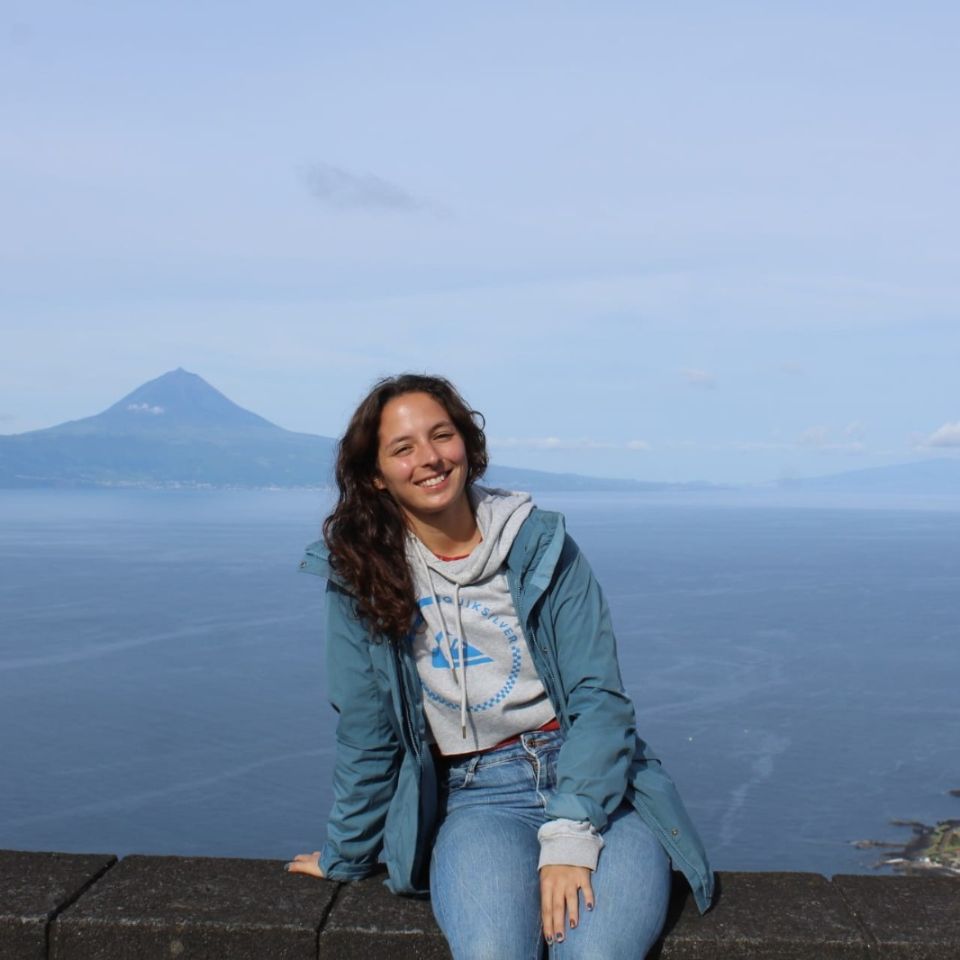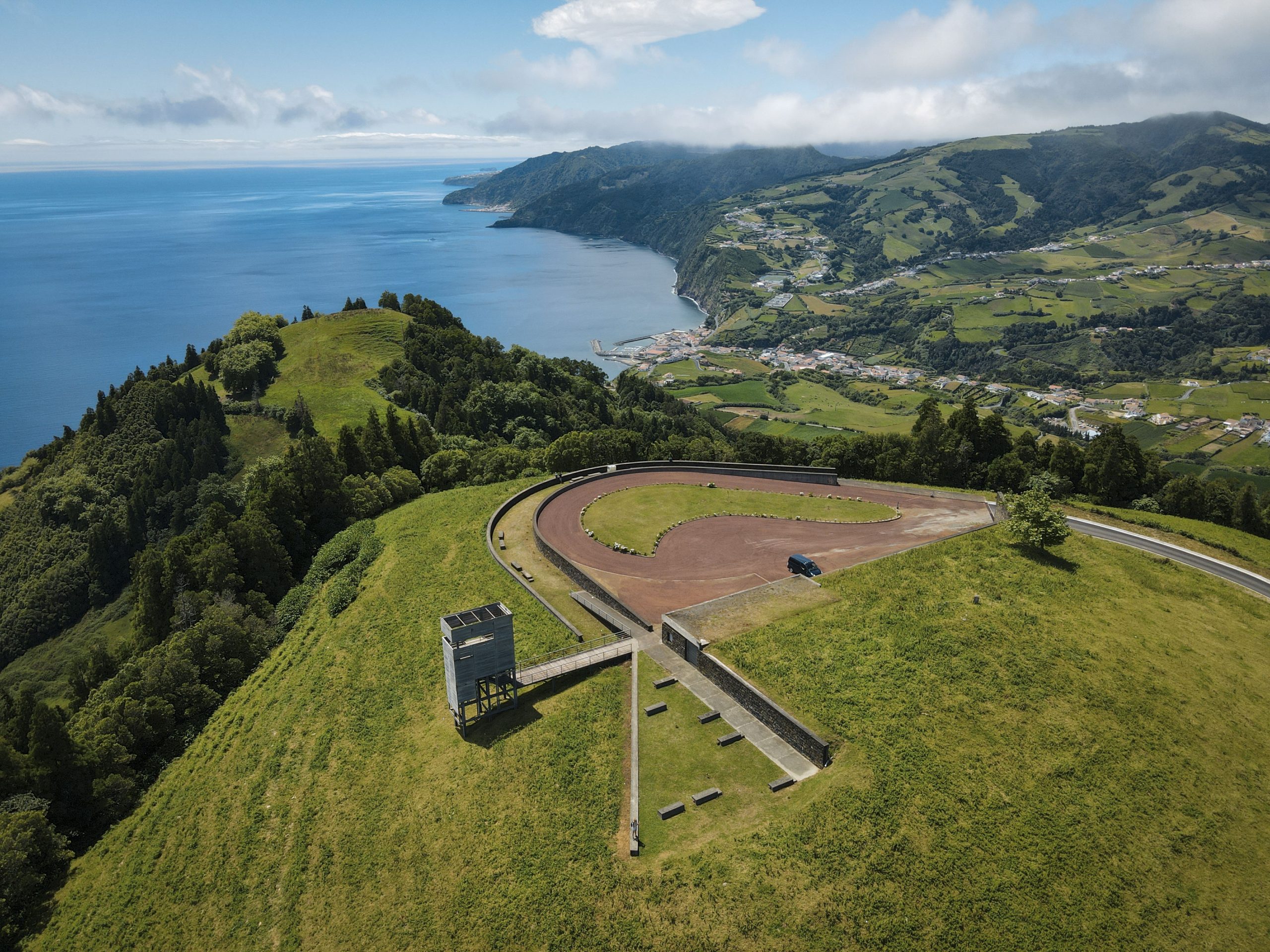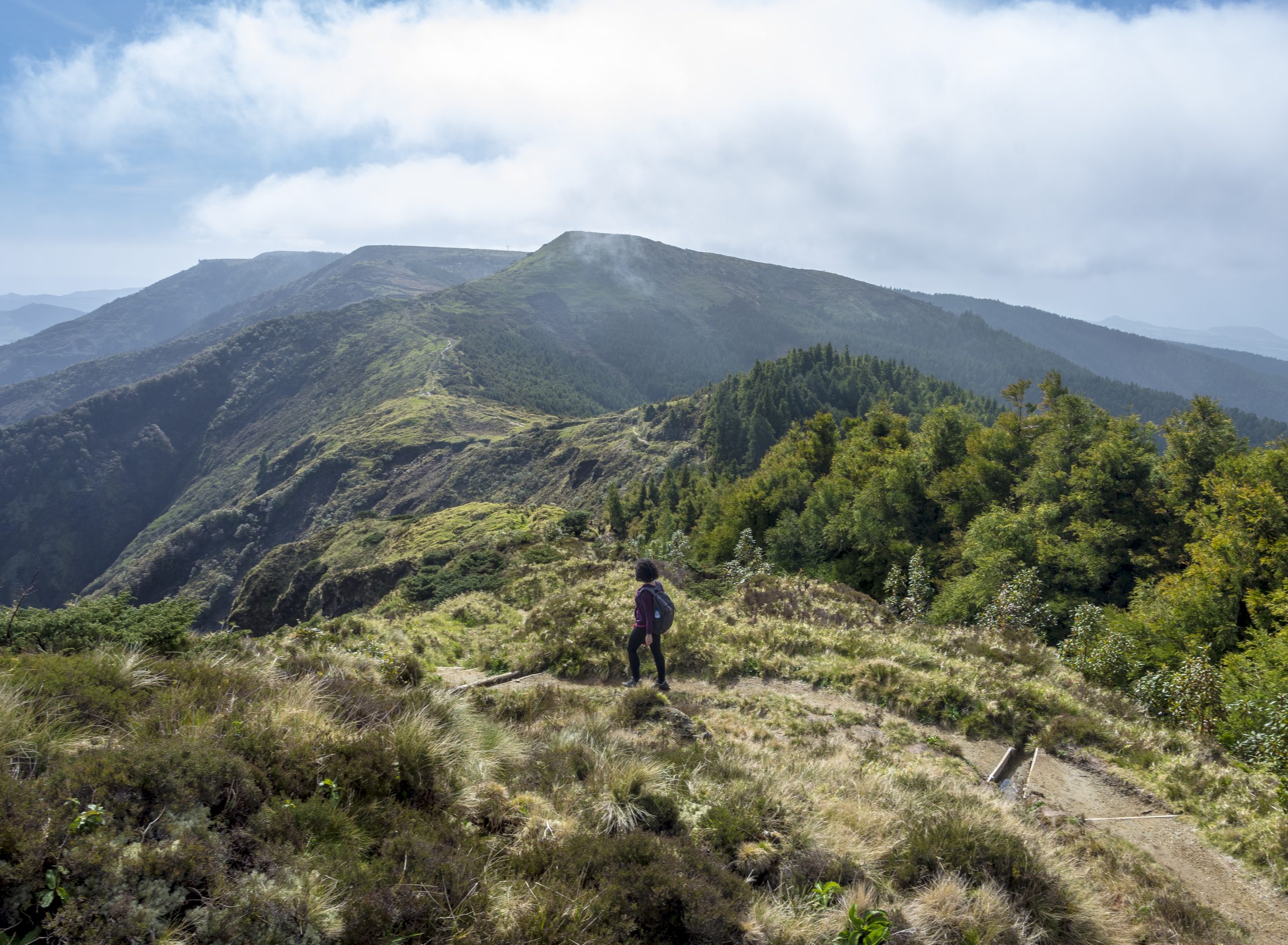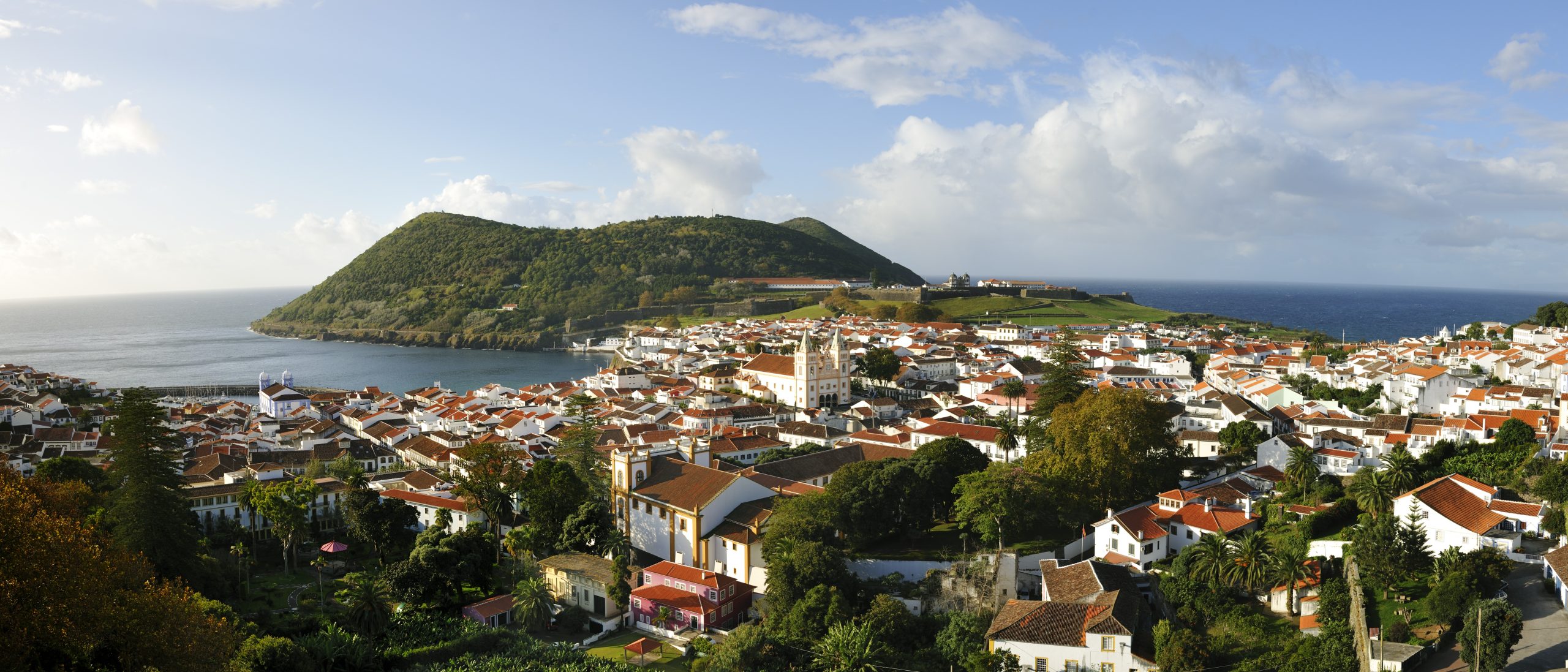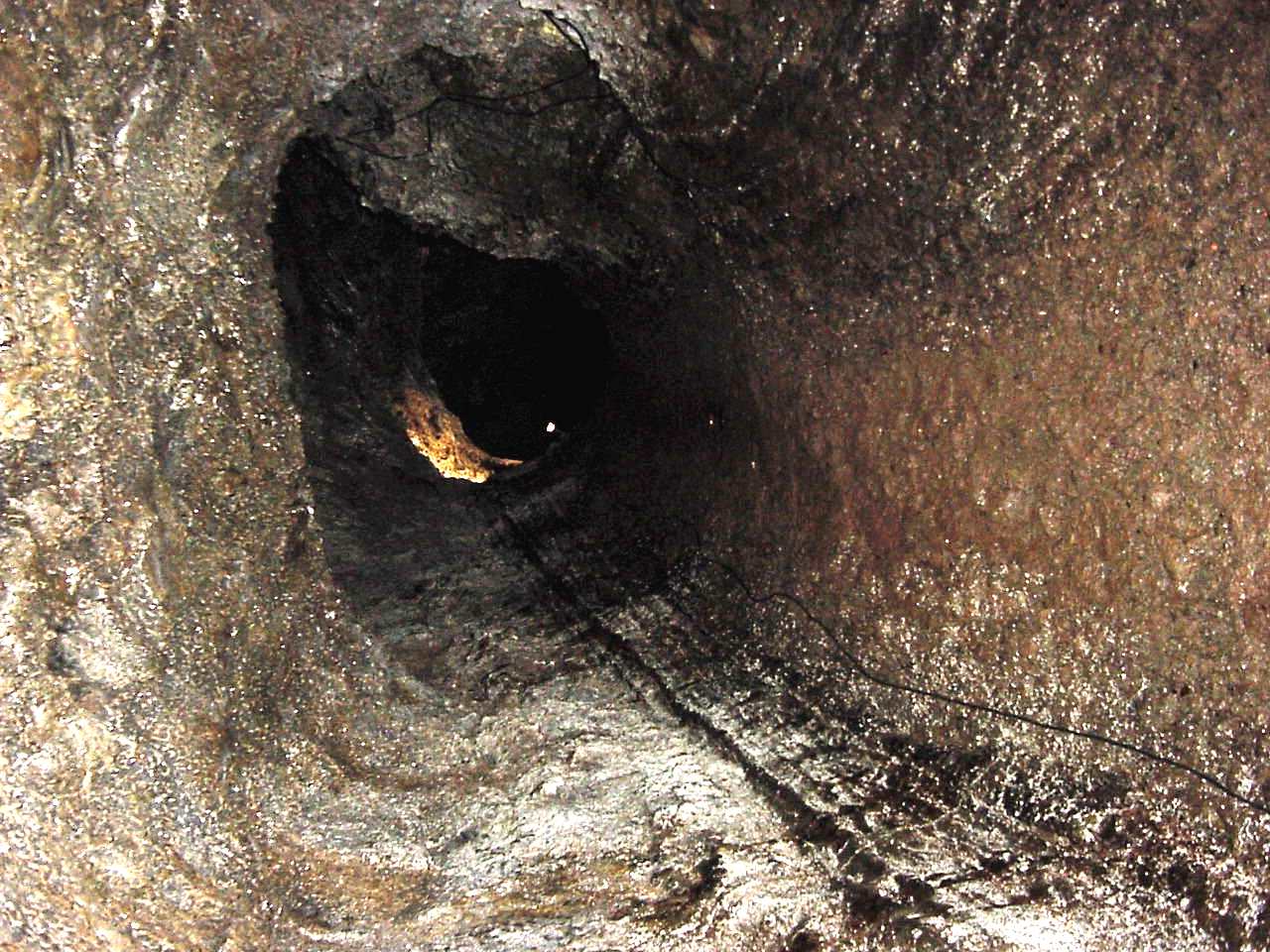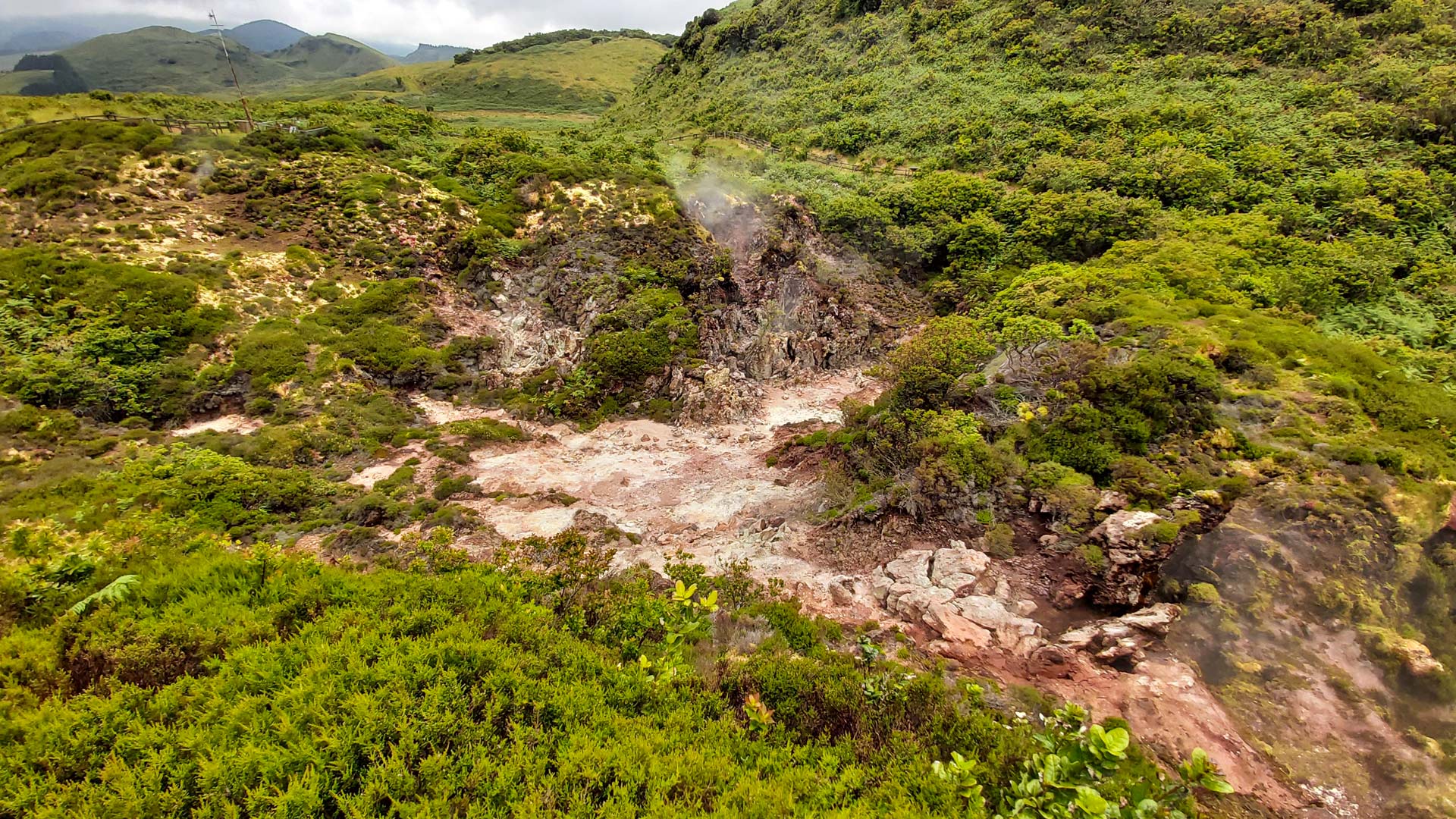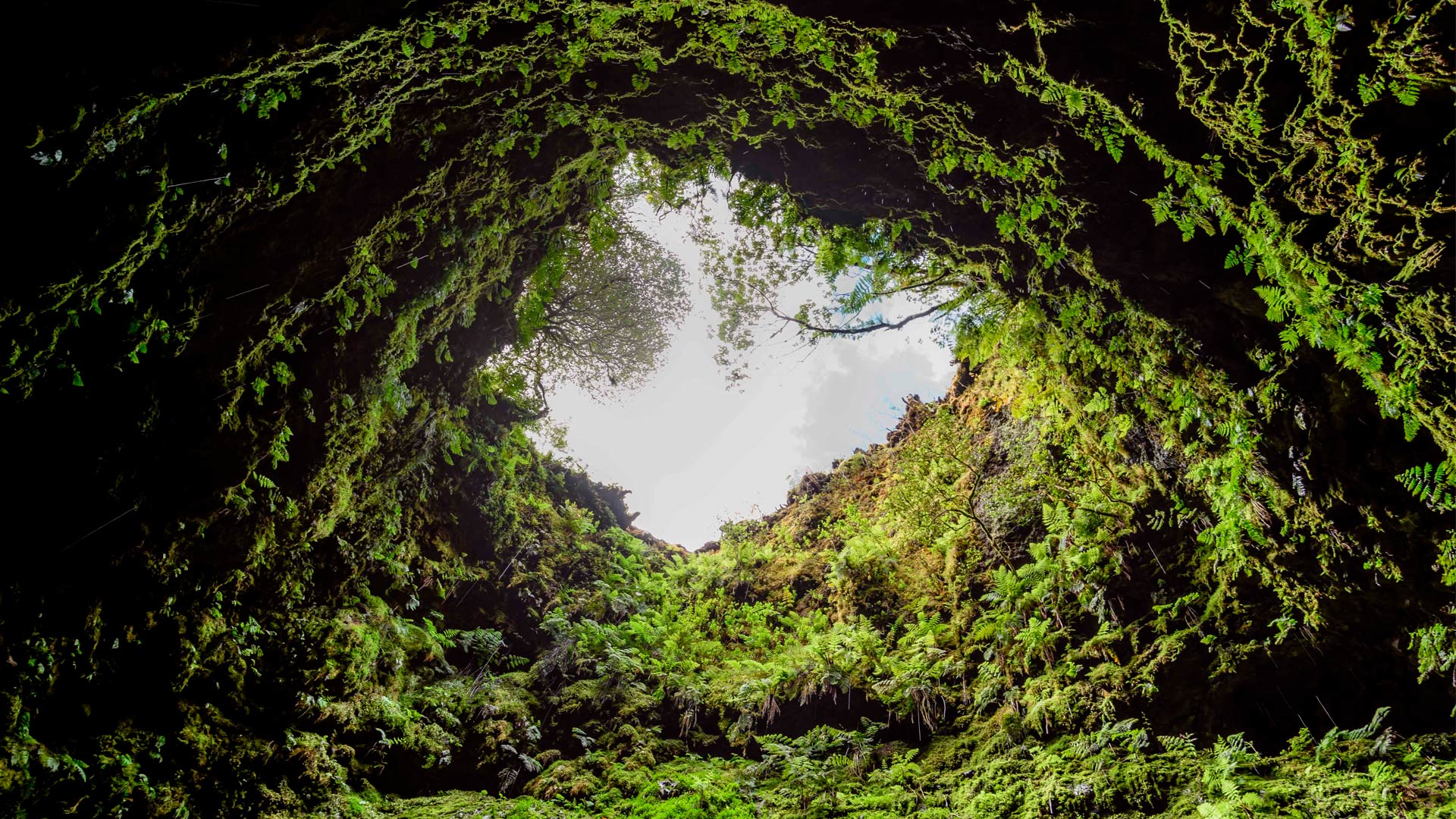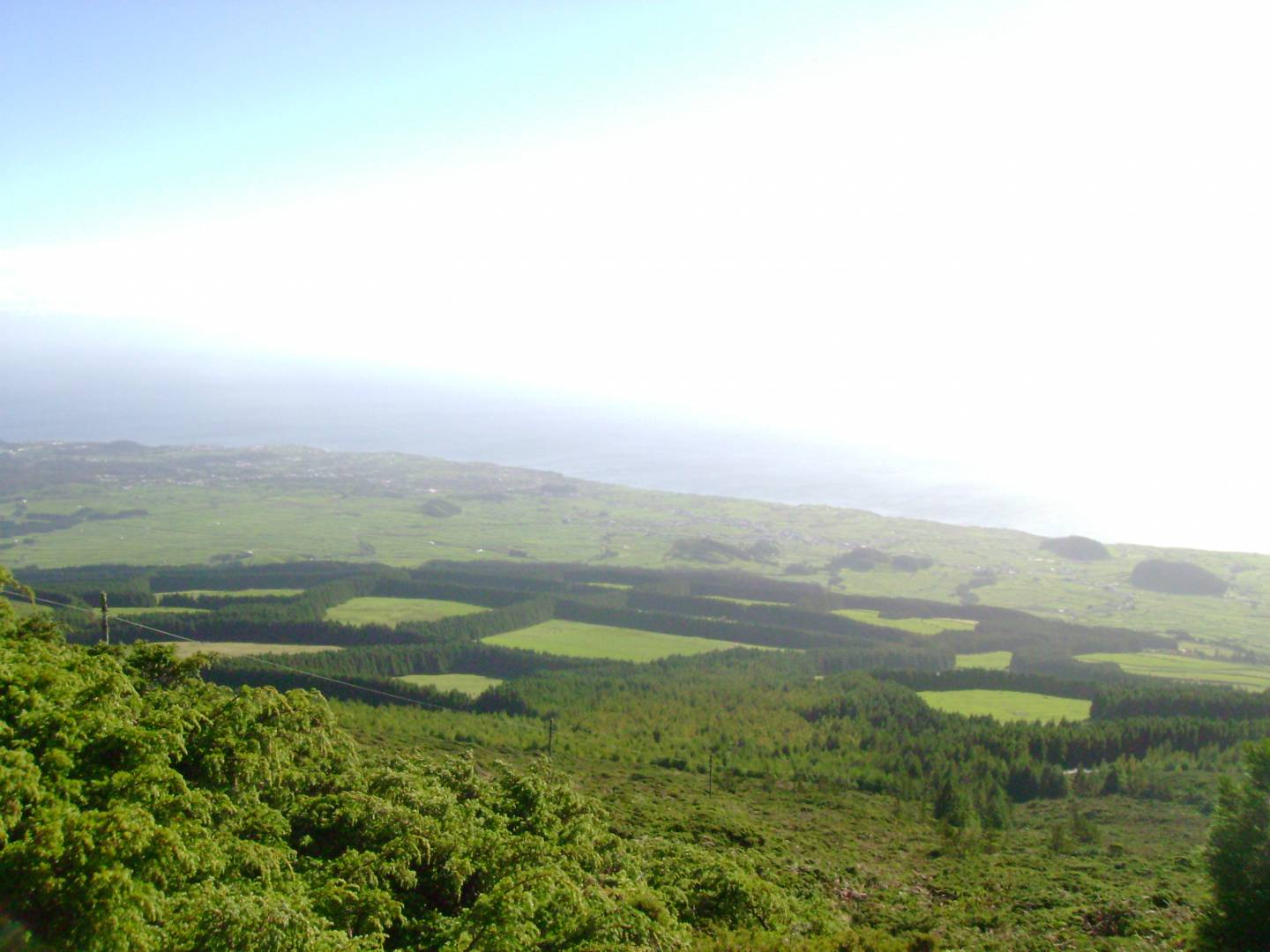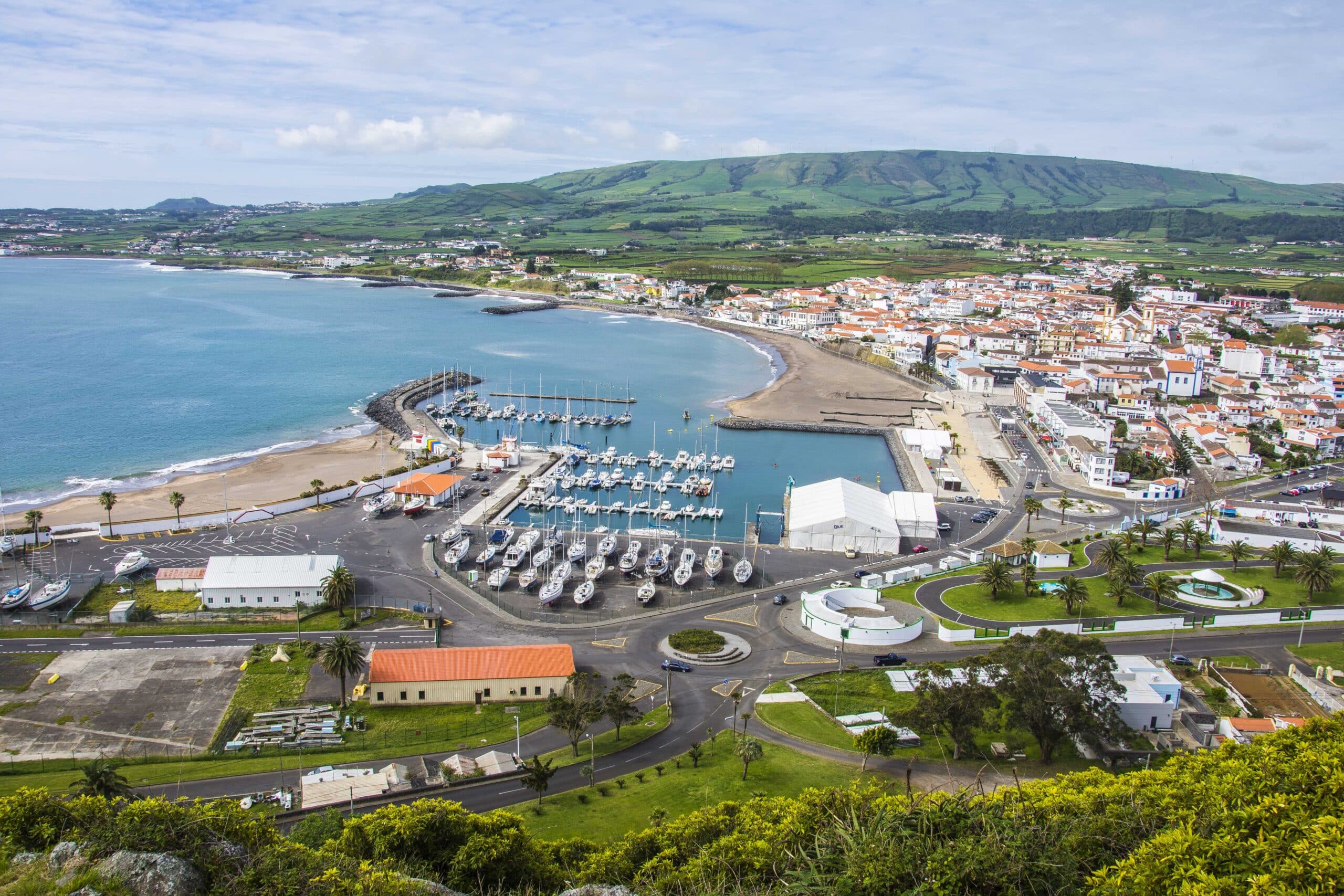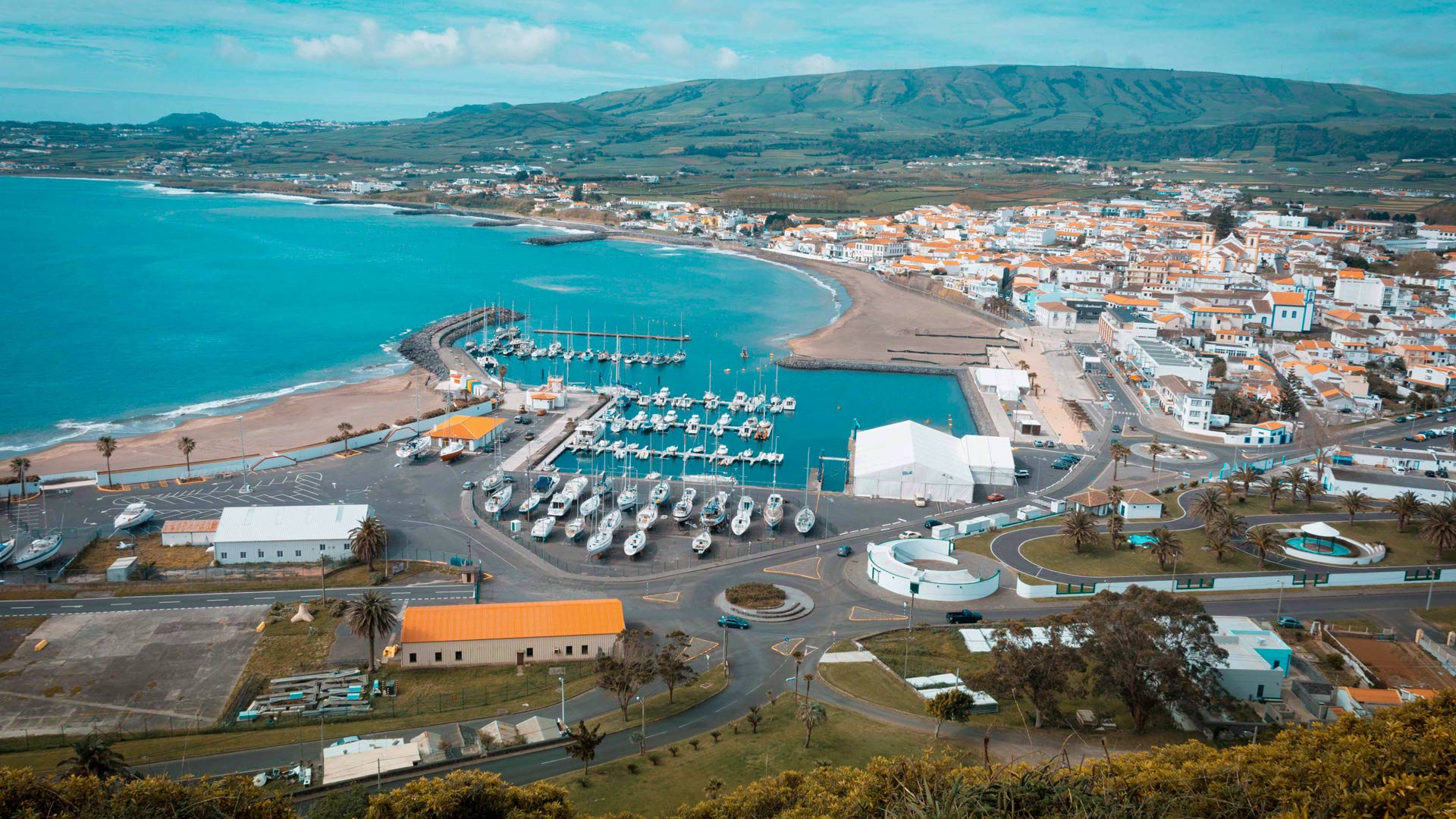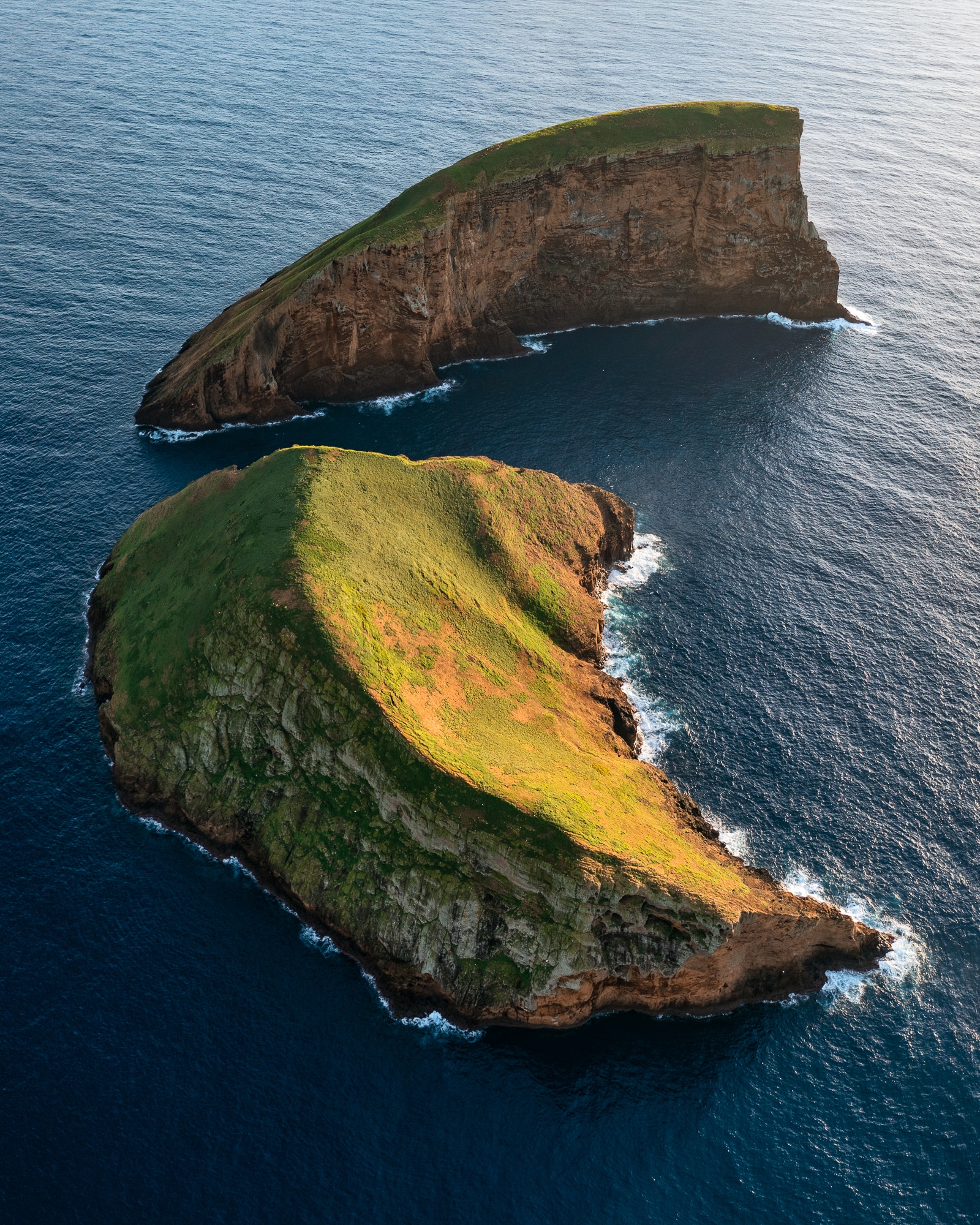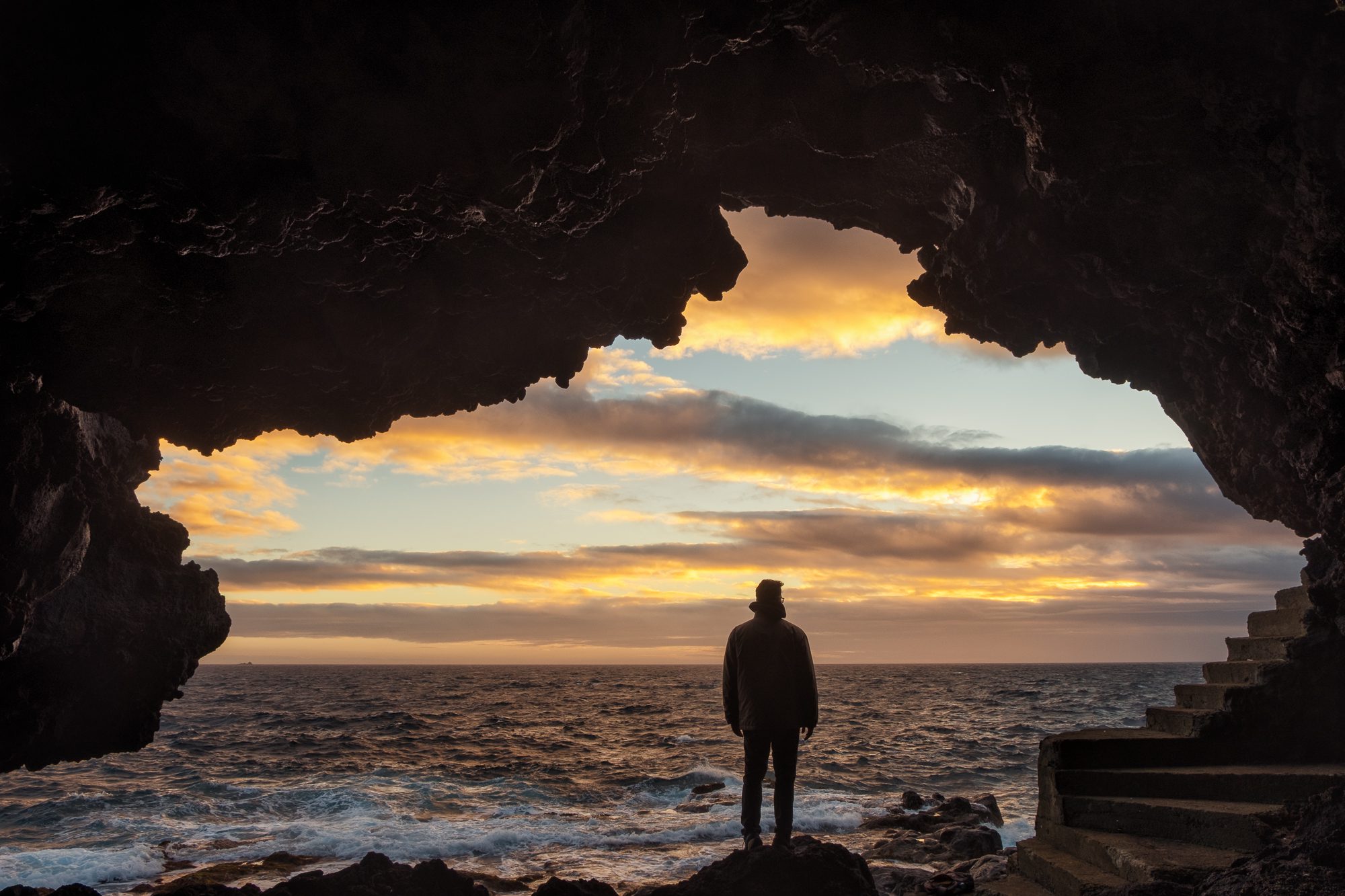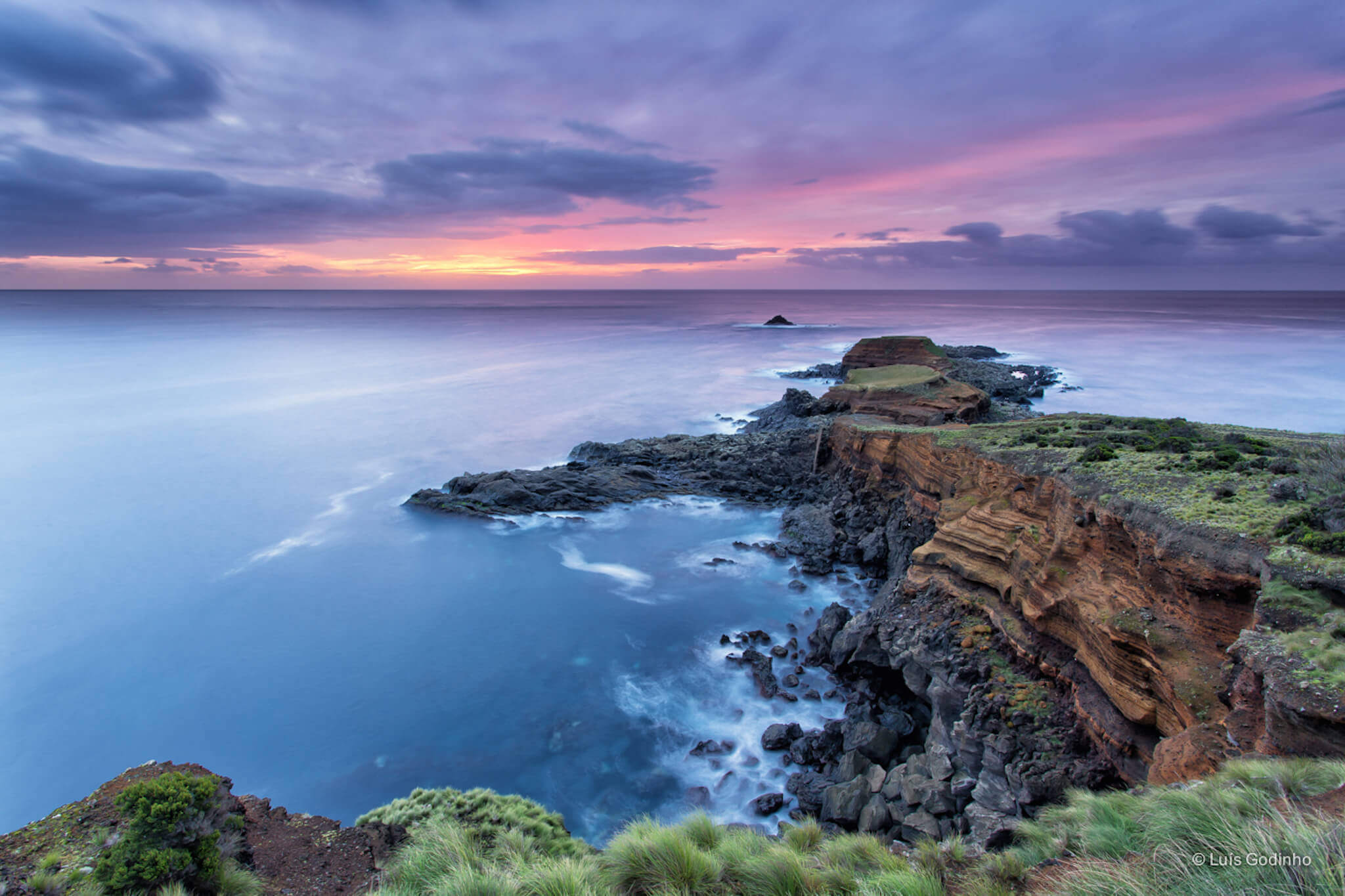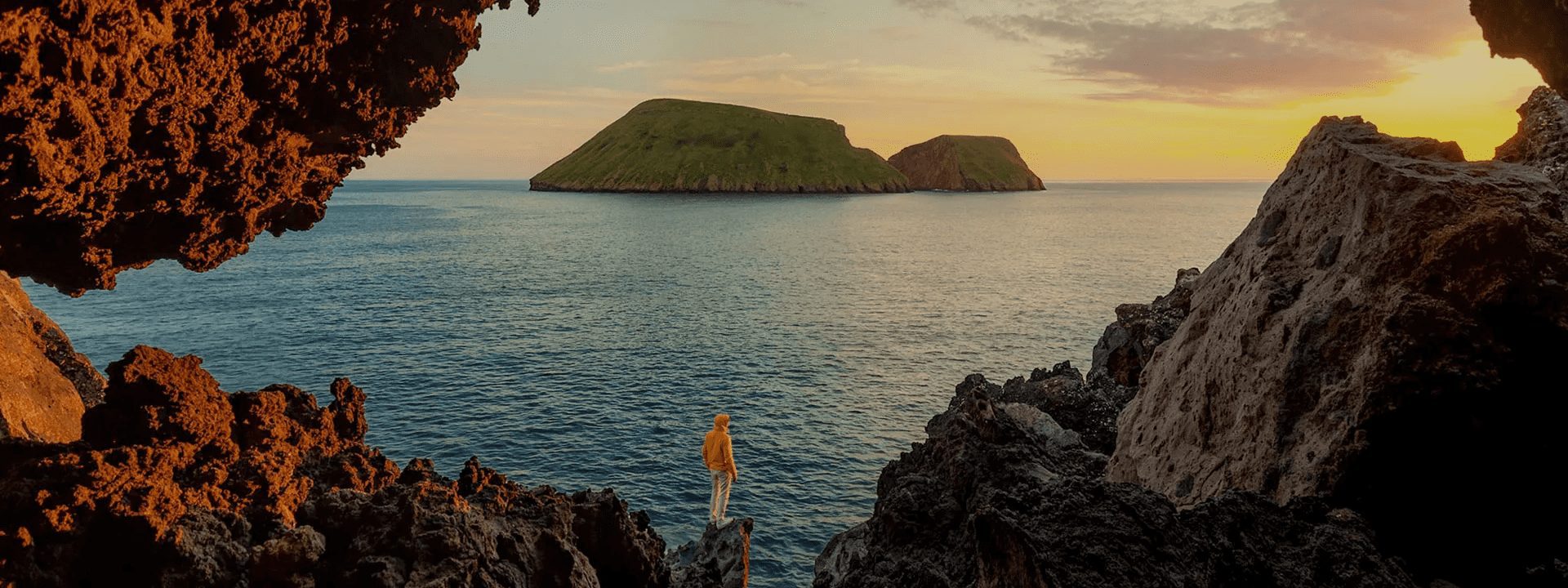Enjoy the most beautiful views of Terceira island at Miradouro Serra do Cume. From up there, you will have a panoramic view over the agricultural lands of the Southeastern part of the lilac island.
A great feeling of tranquility will invade your soul as you look at this infinite patchwork of green fields. Between the greenery, the walls of lava stone separating the lands, the colorful flowers, and the ocean in the background, this is a good place to start your trip to Terceira.
This complete guide to Miradouro Serra do Cume will help you discover everything about this wonderful place in the middle of the Atlantic.

What is Miradouro Serra do Cume

Miradouro Serra do Cume is an incredible viewpoint. It is undeniably one of the most popular attractions of Terceira island, in the central group of the Azores archipelago. It is located on top of the result of an old volcanic eruption by the largest volcano on the island, with a diameter of 15 kilometers. This eruption even enlarged the island’s shores for a few more kilometers into the ocean.
Serra do Cume offers the most spectacular view of the island. On the spot, they built a wooden bridge to create perfect pictures. It officially opened in 2008. However, it was used much before! In fact, during World War 2, military installations were placed there to watch the island and avoid invasions, thanks to its good visibility.
From one side, at 545 meters above sea level, you can see the southeast region of Terceira to the ocean. The lands in the shape of squares are divided by lava rock walls or hydrangea hedges, creating a natural ‘patchwork’. This makes excellent pictures. What you will be looking at is the largest milk production area of the Azores. You will also observe some volcanic domes created by former eruptions.
From the other side of the viewpoint, at 542 meters above sea level, you can see the region of Santa Cruz. If the weather is good, you will have a beautiful view of Praia da Vitória and its enclosed bay. Moreover, on the same side, the Air Base of Lajes is right beside the town.
Plan Your Visit to Miradouro Serra do Cume

How to Get to Miradouro Serra do Cume
Miradouro Serra do Cume is easily accessible by car, taxi, or guided tour. If you have more time, you can also reach it by foot. It is located at Rua Nossa Senhora da Saúde 23, Praia da Vitória. It is only 20 minutes away by car from Angra do Heroísmo or 15 minutes from Praia da Vitória.
Best Time to Visit
The best time to visit Miradouro Serra do Cume is the golden hour. A few hours after sunrise or before sunset are just great for photographs. However, sunset is also a great time to go! Plus, there won’t be as many people if you go late in the day.
If you like to go early for the sunrise, it is also excellent as there are two sides to the mirador. Indeed, you can be oriented towards the southwest or the northeast.
Pro Tips

When coming to Serra do Cume, as it is in altitude, there might be some clouds. If that is the case when you are up there, just be patient for a little while (if there is not so much cloud coverage and if the clouds are not too thick). In the Azores, the weather can change quickly. You might be rewarded with the best view if you arm yourself with patience.
Nearby Attractions
Explore Algar do Carvão

Algar do Carvão is an 80-metre-deep volcanic chimney with a crystal-clear lake inside. Admire the most beautiful opal stalactites and stalagmites. This site is a must-visit due to its international relevance and scientific and tourist interest. To access this underground wonder, you’ll have to go down the 338 stairs and through the tunnel into Algar do Carvão.
Once inside Algar do Carvão, nothing feels like our world; it’s like walking on another planet. Impressive stalactites and evidence of the eruption gave rise to the cave. Look inside the cave. You will find magnificent whitish walls with red veins. The rocks are rich in iron and silica minerals, and there are also some layers of basalt.
Visit Praia da Vitória

Praia da Vitória on Terceira Island is a beautiful coastal town that attracts travelers and locals alike for a great ocean getaway. Thanks to its natural beauty and cultural events, the town offers many outdoor activities. The beach is the ideal place to relax during your holiday.
Locals go there to enjoy the sun and the clear waters, as well as to windsurf. Bars and restaurants nearby are ideal for spending more time in this beautiful setting. Praia da Vitória is gorgeous and steeped in history. It was one of the first settlements on Terceira Island in the 15th century, and since then, many significant things have happened there.
The harbor, for example, has many stories to tell. It was responsible for the tremendous economic development of the island, as commercial boats imported and exported agricultural products from there. In the 20th century, a new harbor and a military airport were built, boosting Terceira’s economy.
Did you know
Originally, Praia da Vitória was just called Praia. The current name was given in 1829 due to the proud victory of the locals after a naval battle during the Portuguese Civil War. This name was created to honor them.
Go To the Beach at Praia da Riviera

Located on the East coast of Terceira, in Praia da Vitória, Praia da Riviera is usually less crowded than the others, but certainly not for being less beautiful. On this still-wild beach, you can see migratory birds nesting, especially quails.
Angra do Heroísmo

Angra do Heroísmo, the largest city in Terceira, captivates visitors with its picturesque setting. Just behind the town, the iconic green peninsula of Monte Brasil rises, offering breathtaking views. Narrow streets and colorful houses further enhance its unique charm. In 1983, Angra was classified as a UNESCO World Heritage Site.
The city is perfect for a stroll. Monuments and museums allow visitors to immerse themselves in its rich history. The Volcano Speleological Museum, owned by the Montanheiros Association, is a must-visit for those interested in geology and volcanology.
Among the city’s most iconic spots are Praça Velha and Rua da Sé. Beautifully paved streets, cafés, restaurants, traditional shops, and historical landmarks fill these areas. They truly capture the soul of Angra do Heroísmo.
Check all our articles about each one of the most relevant points of interest on Terceira Island: Algar do Carvão | Biscoitos | Furnas do Enxofre | Gruta do Natal | Jardim Duque da Terceira | Lagoa das Patas | Miradouro Serra do Cume | Miradouro da Serra de Santa Bárbara | Monte Brasil | Ponta das Contendas | Praia da Vitória | Gruta das Agulhas | Ilhéus das Cabras | Miradouro do Facho
Complementary Information
Best Season to Visit the Azores
The Azores Archipelago boasts a unique climate that shapes its lush landscapes, making it a splendid year-round destination. With mild temperatures and minimal fluctuations, each season offers something unique. Spring averages 16 °C, summer reaches 21 °C, autumn cools to 18 °C, and winter remains mild at 14 °C.
→ For a detailed breakdown of the weather by month, check the following links 🌤️☔️: January | February | March | April | May | June | July | August | September | October | November | December
How to Get to the Azores
The Azorean Archipelago is easily accessible through numerous flight routes. Lisbon and Porto are the main entry points to the continent, with direct flights available to São Miguel (PDL), Terceira (TER), Faial (HOR), Pico (PIX), and Santa Maria (SMA). To find the best flight, use search engines like eDreams or Skyscanner. These platforms let you compare prices and schedules from multiple airlines in one convenient location.
For more details on how to get to the Azores, take a look at our complete guide. But what if you want to explore beyond your arrival island? We’ve got you covered!
- Azores airports 🛬
- Flights between islands ✈️
- Ferries between islands ⛴️
- Which island to choose? 🏝️
- What airlines fly to the Azores? 🛩️
→ Once you’ve found the perfect route, book your tickets and get ready to experience one of the world’s most stunning island groups!
Travel Essentials
Essential Information for your Azores trip: Azorean Language & Phrases 🗣️ | Currency & Banks 💵 | Credit Cards & Traveler’s Cheques 🏧 | Driving in the Azores 🚗 | Electricity 🔌 | Experiences & Tours 🗺️ | Health & Safety 🩺 | Internet & Wi-Fi Access 🛜 | Phones & Mobile Service 📞 | Post Offices & Buying Stamps ✉️ | Public Holidays 🏖️ | Shopping 🛒 | Time & Daylight 🕒 | Whale Watching Guide 🐳 | Best Island to Visit 🏞️
Useful Tools & Apps
The weather in the Azores can be variable, so it’s helpful to use some apps before visiting the islands. Spotazores provides live camera feeds from the main tourist attractions, allowing you to check the weather and plan your visit. For accurate weather predictions, use Windy or Windguru — they provide the most reliable predictions.
Video
Conclusion
Miradouro Serra do Cume is an excellent example of how nature and human intervention can work perfectly together, creating a unique landscape worthy of postcards and award-winning photographs. Among all islands, this viewpoint is one of the top 10 things to see in the Azores. This is, without any doubt, a stop you should add to your itinerary to the Azores islands if you intend to go to Terceira for some days.
Authors’ Note
I am pleased to inform you that all the recommendations in this article are based on my personal experience and observations. As the author, I have personally visited each attraction mentioned, ensuring that every suggestion is grounded in first-hand knowledge and genuine enthusiasm.
FAQs
The Miradouro da Serra do Cume is located at the top of the Serra do Cume complex in the municipality of Praia da Vitória, on Terceira Island, Azores.
At 542 meters above sea level, the viewpoint offers views of Praia da Vitória Bay, the Lajes Plain, and Lajes Air Base. On the other side, you can see the vast inland plain with fields divided by volcanic stone walls and hydrangeas.
Serra do Cume is the result of an ancient volcanic eruption, likely the island’s primordial volcano. The eruption created a caldera about 15 km in diameter, forming the large plain used for grazing today.
During World War II, Serra do Cume housed underground military installations known as the Casamatas da Serra do Cume, which were used for strategic surveillance.

